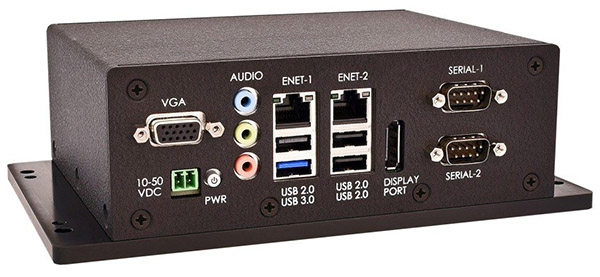By George T Hilliard

The title of this blog, “what is an industrial small form factor computer” should be followed by “and why should you care.” You should care because an industrial small form factor computer may be the key component that drives your entire operation, as the latest models pack more of a punch than ever before. The obvious advantages of these platforms are that they can fit into tighter spaces, and they consume less power than their larger brethren. Before we get too deep into the advantages and the tradeoffs associated with small form-factor industrial computers, let’s define what such a product is.
Small form factor computers, also known as SFF computers, don’t fall under an official designation, but rather a range of products originally compared against desktop PCs or larger industrial systems, such as a VME chassis. Form factors that can be lumped into the SFF category could include, Micro-ATX, Mini-ITX, Nano-ITX, Pico-ITX, and FEMTO-ITX. It would also cover EBX, EPIC, PC-104, 3.5-inch, and other form factors. Automation and transportation are two popular applications that are becoming landing spots for such smaller boards.
The advantage of SFF is that you can get a board that fits your specific application, rather than be saddled with something that requires shoehorning into a given area. In fact, there are many examples of where you can take a pair of SFF boards, possibly one general-purpose and one very specialized, and mount them in a chassis that’s more amenable to the available area. Just be careful not to confuse these boards with their consumer brethren. Those models don’t have the specs to play in an industrial environment.
Small in Size, Big in Specs
Don’t let the small size of an SFF board fool you. They can (and do) pack lots of features, oftentimes nearly as much as the larger boards. This includes the latest microprocessors, adequate storage, and most of the common I/O that you would expect and need for your application.
Another important aspect of SFF boards is that they can be packaged and mounted in more creative ways than larger boards, and they may not require much in the way of cooling. Fanless SFF boards/systems are also quite common.
The “industrial” moniker must also be considered because it certainly differentiates the boards from something that can be used in a less robust environment. For example, a common characteristic of an industrial embedded application usually requires reliable operation at temperatures ranging from -40°C to +85°C or satisfying the IEC 68-2-27 specification for shock and vibration resistance.
That latter criterion is critical for industrial applications, as durability is the name of the game here. For example, many board suppliers make the extra effort to solder components directly onto the pc board, instead of placing them in sockets. Other situations may require access to airflow or mounting a box in a particular configuration. In addition, some applications require various levels of redundancy, such as storage and/or power supplies.

One system that fits these industrial requirements and is also considered “small form factor” is the WINSYSTEMS SYS-405Q. It’s a rugged, industrial system that can handle extended temperatures without the need for a fan or heat-pipe. The platform, protected by a rugged enclosure, is based on Intel’s quad-core Atom E3845 processor. It includes dual Ethernet, dual MiniPCIe, USB 3.0, serial ports with RS-232/422/485, and two independent displays via DisplayPort, and/or analog VGA.
The bottom line is, don’t let the size of a small form factor computer fool you. For industrial applications, the electronics available today remove any compromise of functionality when moving to a smaller, more rugged package.
